XP-55 Ascender
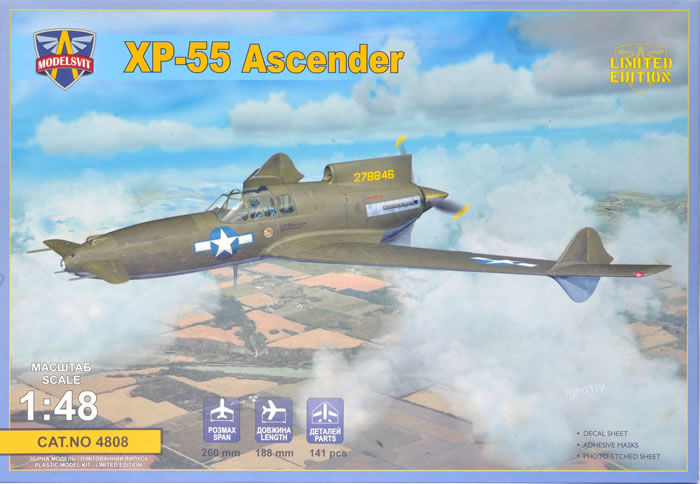
Modelsvit, 1/48 scale
S
u m m a r y |
| Catalogue Number: |
Modelsvit Kit No. 4808 - XP-55 Ascender |
| Scale: |
1/48 |
| Contents and Media: |
88 parts in grey plastic; seven parts in clear plastic; photo-etched fret with 27 parts; decal sheet covering two options for the second and third prototypes; self-adhesive masking sheet for canopy interior/exterior and wheels. |
| Price: |
€28.10 plus shipping available online from Modelsvit
£30.30 EU Price (£25.25 Export Price) plus shipping available online from Hannants
and retailers wordwide. |
| Review Type: |
FirstLook |
| Advantages: |
A new, highly detailed kit with first-rate surface details and crisply molded parts. |
| Disadvantages: |
Extra effort will be required for parts cleanup and test fitting. PE is utilized throughout the build, which could be a challenge for some builders. |
| Recommendation: |
This model is best categorized as limited production although it must be considered to be at the very top of that category. There is a small bit of flash here and there but overall the model is crisply molded, highly detailed, and looks like a real winner. Hats off to Modelsvit for producing such a quality kit of a lesser-known but very interesting aircraft. |
Reviewed by John Miller

The Curtiss-Wright XP-55 Ascender (company designation CW-24) is a 1940s United States prototype fighter aircraft built by Curtiss-Wright. Along with the Vultee XP-54 and Northrop XP-56, it resulted from United States Army Air Corps proposal R-40C issued on 27 November 1939 for an aircraft with improved performance, armament, and pilot visibility over existing fighters; it specifically allowed for unconventional aircraft designs.
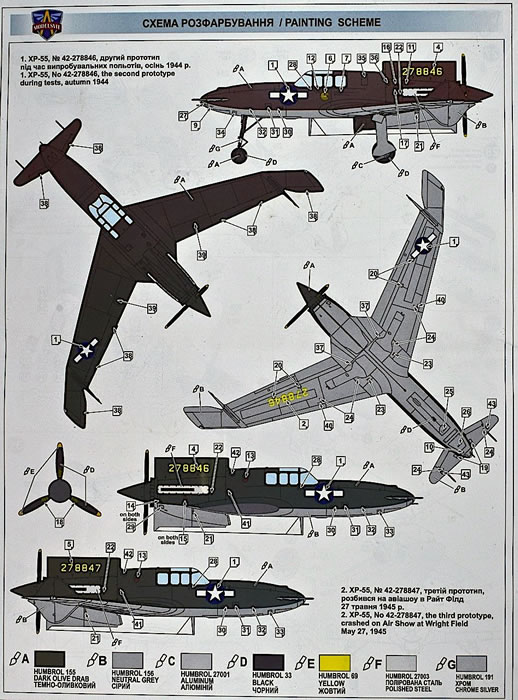
A highly unusual design for its time, it had a canard configuration, a rear-mounted engine, swept wings, and two vertical tails. Because of its pusher design, it was sarcastically referred to as the "Ass-ender.” Like the XP-54, the Ascender was initially designed for the Pratt & Whitney X-1800 engine and had to be redesigned when that engine project was canceled. It was also the first Curtiss fighter aircraft to use tricycle landing gear.
Edited from Wikipedia
The kit is supplied in a sturdy, lidded box with the clear sprues, photo-etched fret, and masks separately bagged. The inscribed panels lines are scale appropriate and restrained. The cowl fasteners are especially well done and emblematic of most the surface details. The parts layout and engineering are conventional so, per usual, assembly begins with the cockpit.
To digress, I was very impressed with the cockpit of the Modelsvit 1/48 P-51H but the folks at Modelsvit have really out done themselves with the cockpit assembly in this Ascender. Outside of wiring and panel placards, there really isn’t much that can be added; well done! The instrument panel is provided in PE as is the seat harness. A multitude of levers, cranks, and trim wheels are provided in crisply molded styrene. A nice touch is the option to use either decals or PE for the side panels. Fortunately, the canopy can be posed open to show off all the detail: awesome.
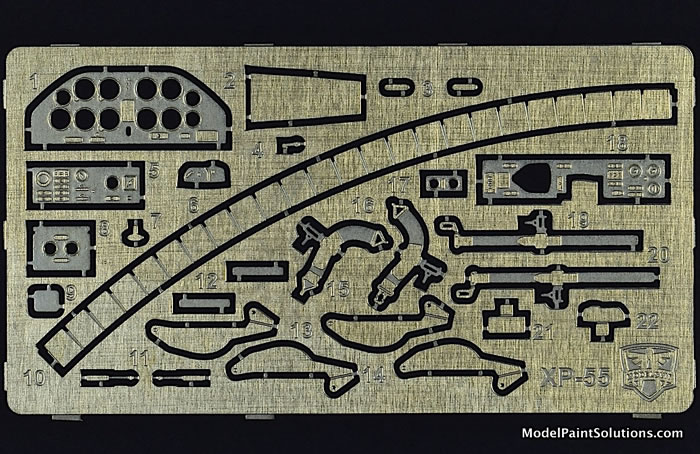
Once completed, the cockpit and an 8-piece nose wheel well assembly are captured between the fuselage halves. In addition, a multi-part trunking assembly is placed behind the engine intake on the dorsal fuselage thereby blocking this large opening. With the fuselage complete the builder is directed to assemble the multi-part main wheel wells onto the full-span lower wing piece. Like the nose well, the main wheel wells are quite detailed and will look very convincing when complete.
Addition of the left and right upper wing halves to the full-span lower wing completes the assembly, which is then offered up to the previously completed fuselage. The multi-part ventral intake is assembled and added next followed by the single-piece left and right vertical stabilizer/rudders and the canard with nose cowl. Neither the rudders or canard is poseable. The addition of the outboard wing panels largely completes the airframe.
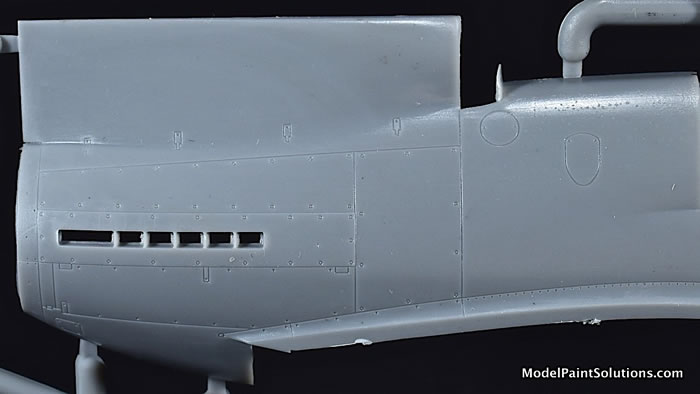
As with most of the smaller cockpit pieces, the landing gear (both nose and mains) are composed of crisply molded parts that will look great under paint and a wash. The gear door attach brackets are provided in PE and will add to the scale look of the assembled gear. Both the nose and main wheel/tire assemblies are comprised of halves. Although there is no tread on the nose tire, the tread pattern on the main tires will have to be repaired following assembly.
The canopy parts are clear with scale-appropriate faming.
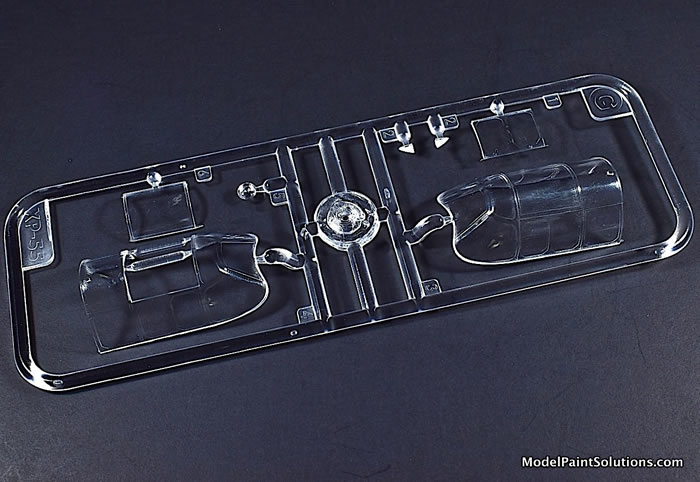
As previously mentioned, both open- and closed-canopy options are provided as are vinyl masks.
Marking Options
The decals, by Modelsvit, are crisply printed with good registration and color density. Of note are the nicely printed main instrument panel faces and cockpit side panels.
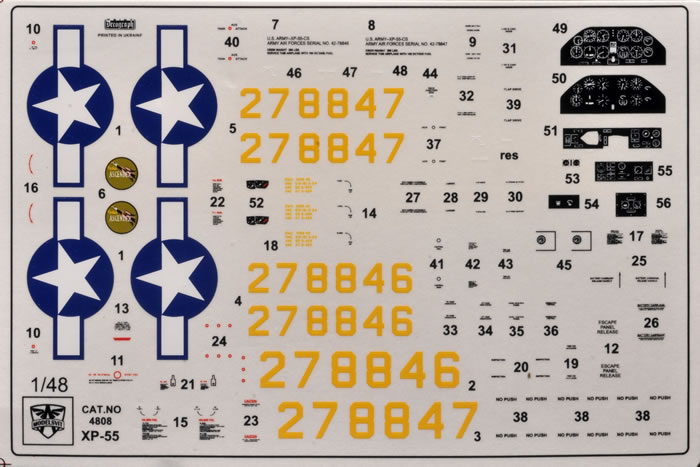
Markings are provided for two prototypes: 278846 and 278847.
This model is best categorized as limited production although it must be considered to be at the very top of that category. There is a small bit of flash here and there but overall the model is crisply molded, highly detailed, and looks like a real winner. Hats off to Modelsvit for producing such a quality kit of a lesser-known but very interesting aircraft.
For more on this review visit Modelpaintsolutions.com
Review kit provided by my retirement fund and Skyway Model Shop
Review Text Copyright © 2020 by John Miller
Page Created 3 September, 2020
Last updated
3 September, 2020
Back to HyperScale Main Page
Back to Reviews Page |
